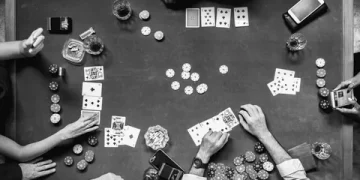Crash gambling has gained popularity among UK players thanks to its simplicity, high-speed gameplay, and thrilling risk-reward structure. But behind the rising multipliers and fast-paced rounds lies a complex algorithm that determines exactly when the crash happens. Understanding how this algorithm works not only builds trust in the game but also helps players make more informed decisions during play.
Here’s a detailed look at the algorithm behind crash games and how it ensures fairness and unpredictability.
What Is the Crash Game Algorithm?
At its core, a crash game is governed by a mathematical formula that decides when each round will crash. The result is a multiplier, such as 1.10x or 50.00x, that climbs in real time before abruptly stopping. If the player cashes out before that point, they win according to the multiplier. If they wait too long, the game crashes and they lose their bet.
The crash point for each round is determined in advance using an algorithm, either through a Random Number Generator (RNG) or a provably fair system, depending on the platform.
Crash Games on UK-Licensed Casinos
When you play crash games like Spaceman at UK-licensed casinos, the outcomes are based on certified RNG software. This system generates results that are independently audited for fairness.
Key features:
- RNG generates the crash point before each round starts
- The outcome is not influenced by player actions or casino staff
- Regulated by the UK Gambling Commission with strict testing requirements
While players can’t see the inner workings directly, these platforms undergo regular audits to maintain transparency and fairness.
Crash Games on Non GamStop and Crypto Casinos
Many popular crash games, such as Aviator and JetX, use a provably fair algorithm—a cryptographic system that lets players verify that each game outcome was not manipulated.
How it works:
- The crash multiplier is generated using a hash function (usually SHA-256 or similar)
- A combination of server seed, client seed, and nonce produces a random outcome
- Players can view the hash before the round starts and verify the result afterward
This method increases transparency and allows UK players to independently confirm the fairness of each round, making provably fair games popular at non GamStop and crypto casinos.
Crash Formula Example (Simplified)
Many provably fair crash car games use a formula similar to this:
Crash multiplier = floor((100 / (1 – r))) / 100
Where r is a random value between 0 and 1. This ensures a wide distribution of crash points, where low multipliers (e.g., 1.01x to 2x) are common, and high multipliers (50x or more) are rare but possible.
Some games also introduce forced crash points, such as a minimum one in every 100 rounds reaching 100x or more, to keep players engaged.
Why the Algorithm Matters
Understanding the crash algorithm helps players see that outcomes are:
- Random and unbiased
- Not influenced by win/loss history
- Unpredictable, meaning no guaranteed patterns
The algorithm also helps maintain the house edge, usually set between 1% and 3%. While you might see streaks of high or low crashes, these are all within the expected distribution controlled by the algorithm.
How to Verify Fairness
If you’re playing on a crypto or non GamStop site:
- Look for a provably fair badge or feature
- Check the hash and seed values before and after each round
- Use built-in verification tools provided by the platform
These tools let you confirm that the hash matched the outcome, proving the game wasn’t altered.
Conclusion
The algorithm behind crash games is the heart of what makes them thrilling, unpredictable, and fair. Whether it’s the certified RNG used by UK-licensed casinos or the provably fair systems on crypto platforms, the goal remains the same: to create random and transparent outcomes for every round. By understanding how the algorithm works, UK players can play crash games with greater confidence and make better-informed betting choices.






